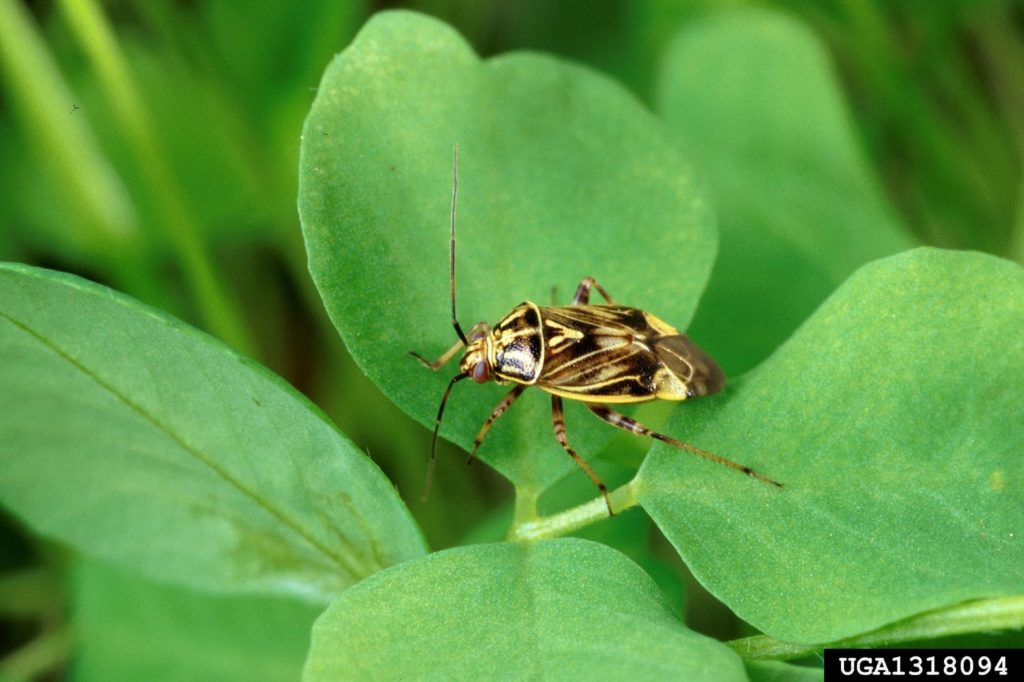The case of lygus bug versus the alfalfa plant bug: It is easy to understand why lygus bugs (Lygus spp.) and alfalfa plant bugs (Adelphocoris lineolatus) are difficult to tell apart as they are closely related, belonging to the same family (Hemiptera: Heteroptera). They are similar in appearance (long narrow body) with the alfalfa bug being slightly longer. Adult lygus bugs have a distinctive triangular or “V”-shaped marking in the upper centre of the their backs and membranous wingtips. The alfalfa plant bug has a similar marking but it is less distinct. One difference between the two is that lygus bug nymphs have five black dots over their thorax and abdomen which alfalfa bug nymphs lack.
Another difference is that lygus bugs have a broader host range that includes canola, alfalfa, soybean, sunflower, strawberry and several other crops. Alfalfa bugs have a much more particular palette and are mainly found in alfalfa crops and only occasionally feed on red and yellow sweet clover or canola when alfalfa is in short supply.
For more information about these species and more tips on telling them apart, see our Insect of the Week page!


The case of the innocuous versus the evil twin: When making pest management decisions, be sure that the suspect is actually a pest. This can be challenge since insects often mimic each other or look very similar. An insect that looks, moves and acts like a pest may in fact be a look-alike or doppelganger.
Doppelgangers may be related (e.g. same genus) or may not be related, as in the case of monarch butterflies (Danaus plexippus) and viceroys (Limenitis achrippus). Doppelgangers are usually relatively harmless but sometimes the doppelganger is a pest yet their behaviour, lifecycle or hosts may be different.
Correctly identifying a pest enables selection of the most accurate scouting or monitoring protocol. Identification and monitoring enables the application of economic thresholds. It also enables a producer to select and apply the most effective control option(s) including method and timing of application. For the rest of the growing season, the Insect of the Week will feature insect crop pests and their doppelgangers.
Review previously featured insects by visiting the Insect of the Week page.


